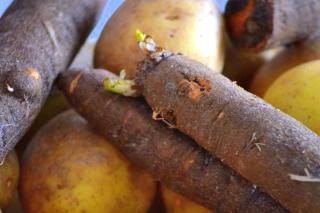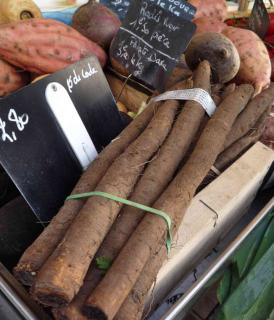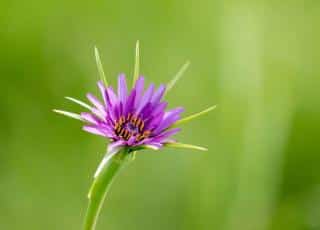

Growing salsify starts in late spring and the harvest is in fall and winter.
Summary of Salsify facts
Name – Tragopogon porrifolius
Common name – purple salsify
Family – Asteraceae
Type – vegetable
Height – 12 to 36 inches (30 to 90 cm)
Exposure – full sun
Soil: light, rich and well drained – Harvest: fall → early spring
Whether you start from seed or plant young plants directly, you’ll see that it’s quite easy to grow superb salsify.
Salsify can be grown from seed or by planting young plantlets. In both cases, check that you’ve got deep, rich and well drained soil which you can obtain if you add fertilizer or compost.
If the soil you’ve got is heavy, you’ll have to lighten it with sand while avoiding stones.
Sowing salsify
This method of growing salsify can be successfully followed by all, even beginners.
Planting salsify
If you’ve purchased salsify as young plants in pots, plan to transfer them to the ground in spring.

To grow larger salsify, feel free to remove floral scapes as soon as they appear. It you let them grow, then root growth will slow down.
Salsify is a vegetable that is quite easy-growing and it fears only very few diseases.
Nonetheless, it may be that your plants appeal to slugs and caterpillars…
Salsify stems resist freezing and can be harvested in fall, winter, and even up to spring.

Salsify is a biennial plant that would normally bloom in spring if it weren’t usually harvested during winter in the 2nd year of growing.
One can harvest salsify from October to April, simply pulling the roots out as needs arise.
How to keep salsify
Once you’ve harvested it, cut the salsify leaves off keep the roots in the dark.
Whatever the variety – ‘Blanc amélioré’, ‘Large-rooted mammoth’ or ‘Russian giant white’, salsify is a vegetable with a delicate and subtle taste that is somewhat close to artichoke.
Salsify is appreciated for its slight taste of almonds. Its flowers boast a fragrance close to the smell of chocolate.
Salsify hosts great nutritional benefits, among which relatively low calorie intake, high levels of protein, calcium, iron, phosphorus and vitamin E.
Salsify proteins amount to 1.5 g for 3.5 oz (100 g), but carbohydrates are where it is striking with only 1/5th oz (5 g) for 3.5 oz (100 g) and relatively low calorie count at 30 kCal.

Their taste is similar, but salsify will produce white roots and violet flowers whereas roots are black and flowers yellow for black salsify.
The purple flowers are why the common name of this vegetable is “purple salsify“.
It is recommended to amend the soil with compost before the planting and to loosen up the soil well.